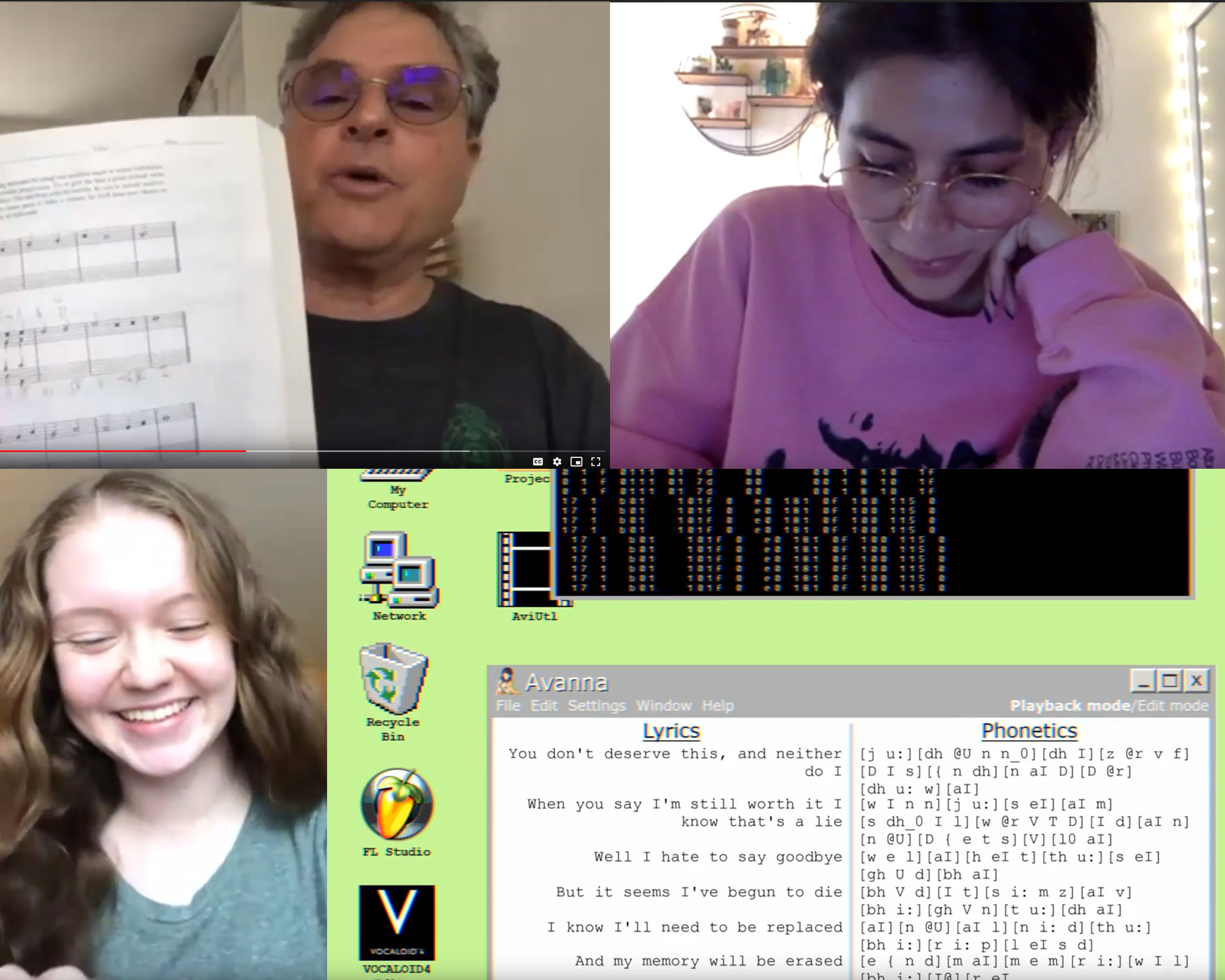News Release
FOR IMMEDIATE RELEASE
2020-04-27-remoteteaching
April 27, 2020
Adjusting to Remote Learning
“I’ll show it to you on the screen,” said Bernardo Feldman as he held up a piece of
paper with handwritten music notes to the computer screen. “This is what my paper
looks like.”
Feldman, chair of the College of the Canyons music department, was leading his Music
120A class through its first tonal harmony lesson via Zoom.
Despite a few interruptions by an ambulance siren and cell phones buzzing off screen,
the class worked together to harmonize a simple melody through the video conferencing
software.
When COC made the decision to transition most of its in-person courses to remote delivery
on March 16, recreating an online classroom environment where students and faculty
could hold discussions, collaborate and create proved to be no easy feat.
This was especially true for professors who had limited online teaching experience.
Many faculty members underwent extensive hours of training because they had never
used Zoom or Canvas before.
“I had to stop my lectures a couple of times to ask the more tech-savvy students how
to do something on Zoom,” said Phil Gussin, a political science professor at the college,
who initially struggled with mastering the new technology.
Fortunately, many professors with online teaching experience offered their less experienced
colleagues a helping hand.
“There were so many faculty who needed help, and everyone pitched in,” said Victoria
Leonard, a communication studies professor at the college, who spent many hours helping
train many faculty members on how to use Canvas.
While the sudden transition to remote learning was challenging, Leonard says the transition
forced her to think outside the box.
“I have used Canvas in ways that I never did before, and I am thrilled with new discoveries,”
said Leonard. “I am also using Zoom in ways I would never have dreamed. “
Leonard is encouraging student engagement by using the “groups” and “break out room”
features on Canvas and Zoom to allow for collaboration and discussion.
“I record lectures so that if a student needs that content, it is available,” said
Leonard. “I have also taken specific lectures that are very important and linked them
into Canvas.”
Her efforts to go the extra mile have not gone unnoticed by her students.
“Online learning is very difficult for me but somehow you are still able to make class
fun and seem like normal,” wrote Kyra Kauffman in an email. “Thank you for being so
responsive to this situation and taking time to hear our perspectives about what’s
going on."
Gussin has noticed how the transition to remote learning has led to more class participation.
“Oddly enough, some students who were reluctant to speak up in a classroom setting
felt more comfortable speaking in a Zoom session,” said Gussin.
The collaborative spirit between faculty has proven to be invaluable during the transition.
For music teachers, remote learning poses an exceptional challenge, but COC music
instructors Julie Lawson and Lori Marie Rios are learning to strike a different chord.
“We are both making the best of our situation,” said Julie Lawson, director of the
college’s Just Jazz ensemble. “We've [Rios] been communicating with each other, trying
to figure out the smartest way to stay connected with our students.”
To better assist her students, Lawson purchased an overhead video stand for her iPhone
so she can record herself playing piano for her keyboard class.
“I send them videos of me playing their assignments,” said Lawson. “It's not ideal,
but it seems to be working.”
This semester marks the first time Rios has taught Music 100: Music Fundamentals,
which she now teaches from the back of her daughter’s beauty parlor because it has
a white board installed.
“I miss the students and the interaction between us, but it is working and the students
like it as well,” said Rios.
The hardest thing for Rios was transitioning her choir classes into an online format
due to technological lags, but the kinks seemed to have been worked out.
“Students learned their parts individually and each student sang that part to one
of the songs,” said Rios of her class’ first attempt at holding a virtual choir practice.
“It was a success,” said Rios. “Students were applauding each other.”


